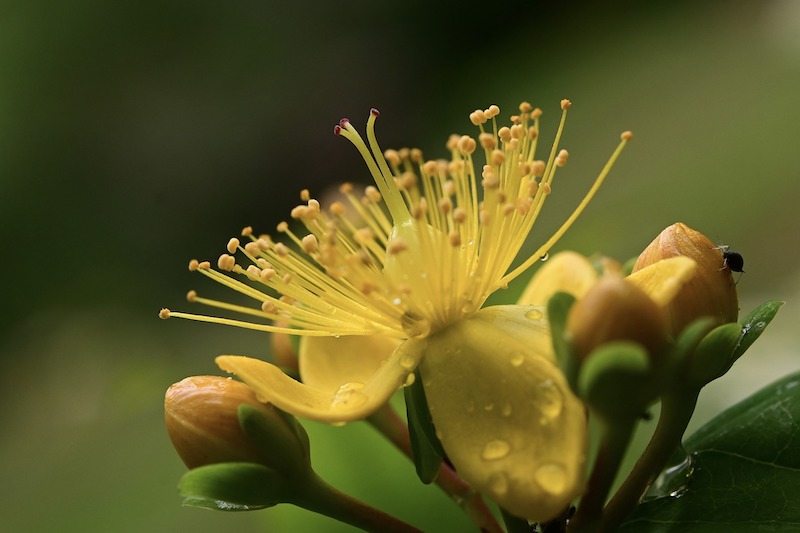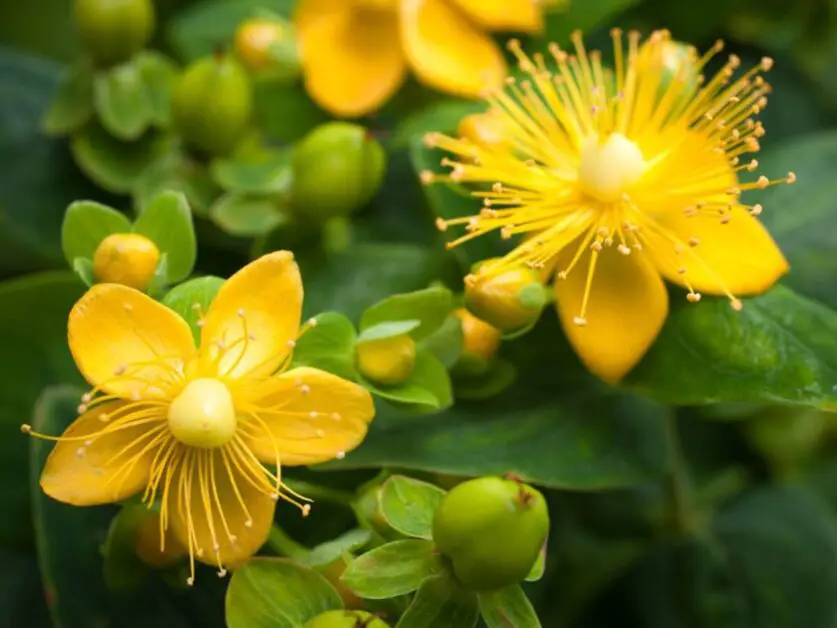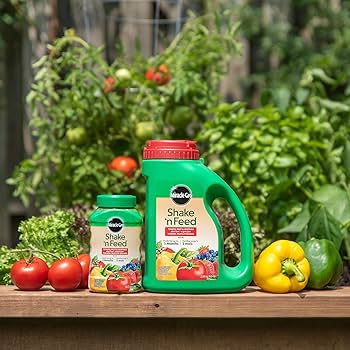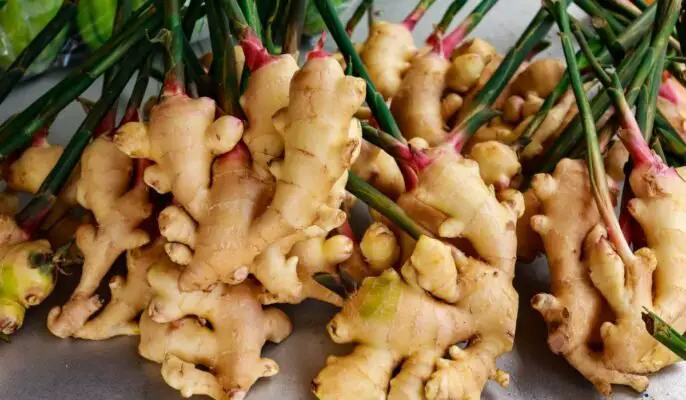St. John’s Wort: Cultivating Hypericum Perforatum
Growing Hypericum Perforatum at Home
Hypericum Perforatum, commonly known as St. John’s Wort, is a versatile herb that can be easily grown at home. This perennial plant is native to Europe and Asia but is now cultivated worldwide for its medicinal properties. Hypericum Perforatum is popularly used in traditional medicine for its various health benefits, including its potential to alleviate symptoms of depression and anxiety.

When growing Hypericum Perforatum at home, it is important to provide the plant with the right conditions to thrive. This herb prefers well-draining soil with a neutral to slightly acidic pH level. It also requires full sunlight exposure for at least six to eight hours a day. Adequate watering is crucial, ensuring the soil is consistently moist but not waterlogged. By following these guidelines, you can enjoy a bountiful harvest of Hypericum Perforatum in your own garden.
Benefits of Cultivating Hypericum Perforatum
Hypericum perforatum, commonly known as St. John’s Wort, offers a multitude of benefits for individuals looking to cultivate this versatile plant at home. One key advantage is its reputation for being a natural mood enhancer and an aid in alleviating symptoms of mild depression and anxiety. The plant contains hypericin and hyperforin compounds that are believed to impact neurotransmitters in the brain, potentially leading to an improved sense of well-being.
Moreover, hypericum perforatum is known for its antimicrobial properties, making it a valuable addition to any home garden. Studies have shown that extracts from this plant exhibit antibacterial and antiviral effects, offering a natural way to promote overall health and wellness. By cultivating hypericum perforatum, individuals can harness these medicinal properties for various health benefits, underscoring the plant’s value as a multipurpose herb with both traditional and modern applications.
Conditions for Growing Hypericum Perforatum
Hypericum Perforatum, commonly known as St. John’s Wort, thrives in temperate regions and requires specific conditions for optimal growth. This perennial herb prefers well-drained soil with a slightly acidic to neutral pH level. It is essential to ensure proper soil quality to support the plant’s development and prevent waterlogging, which can lead to root rot.
Additionally, Hypericum Perforatum thrives in full sun but can also tolerate partial shade. Adequate sunlight exposure is crucial for the plant to photosynthesize efficiently and produce its characteristic yellow flowers. When selecting a location for planting, consider the availability of sunlight throughout the day to meet the plant’s requirements and promote healthy growth.
Soil Requirements for Hypericum Perforatum
Hypericum Perforatum, commonly known as St. John’s Wort, is a resilient and versatile herb that can thrive in various soil conditions. When cultivating Hypericum Perforatum, it is essential to ensure that the soil is well-draining to prevent waterlogging, which can lead to root rot. This herb prefers slightly acidic to neutral soil with a pH range of 6.0 to 7.0, providing an optimal environment for its growth and development.
Moreover, Hypericum Perforatum thrives in soil that is rich in organic matter. Amending the soil with compost or well-rotted manure before planting can enhance the fertility and nutrient content of the soil, promoting healthy growth and abundant flowering. Additionally, incorporating a layer of mulch around the plants can help retain moisture, regulate soil temperature, and suppress weed growth, creating a conducive environment for Hypericum Perforatum to flourish.
Sunlight Needs for Hypericum Perforatum
Hypericum Perforatum, commonly known as St. John’s Wort, thrives in locations with ample sunlight exposure. This herbaceous perennial plant requires full sunlight to partial shade for optimal growth and development. Providing Hypericum Perforatum with at least six hours of direct sunlight per day ensures vigorous growth and abundant flowering.
Insufficient sunlight may lead to leggy growth and reduced flower production in Hypericum Perforatum. To maximize its potential, place this herb in a spot where it can bask in the sun’s rays and benefit from the energy required for photosynthesis. Adequate sunlight not only promotes healthy foliage but also enhances the medicinal properties of Hypericum Perforatum, making it a valuable addition to any home garden.
Watering Guidelines for Hypericum Perforatum
Hypericum Perforatum, commonly known as St. John’s Wort, requires consistent moisture levels in the soil to thrive. It is essential to water the plant regularly, ensuring that the soil remains evenly moist but not waterlogged. Overwatering can lead to root rot, while underwatering can cause stress to the plant, affecting its growth and flower production.

When watering your Hypericum Perforatum, it is advisable to water at the base of the plant, avoiding wetting the foliage to prevent fungal diseases. The frequency of watering will depend on factors such as the climate, soil type, and size of the plant. During hot and dry periods, you may need to water more frequently, whereas in cooler and rainy conditions, you can adjust the watering schedule accordingly. By monitoring the soil moisture levels and adjusting your watering routine as needed, you can help your Hypericum Perforatum thrive and produce beautiful blooms.
Propagation Methods for Hypericum Perforatum
Hypericum perforatum, commonly known as St. John’s Wort, can be propagated through both seeds and cuttings. Seeds should be sown in a well-draining seed starting mix in spring, and kept moist until germination occurs, which usually takes around 2-4 weeks. It’s important to keep the soil consistently moist but not waterlogged to prevent rot.
Alternatively, you can propagate Hypericum perforatum from softwood cuttings taken in early summer. Make sure the cuttings are around 4-6 inches long and have at least two sets of leaves. Remove the lower sets of leaves and plant the cuttings in a mix of peat and perlite. Place them in a warm, humid environment with indirect light until they root, which can take 3-4 weeks.
Pruning Tips for Hypericum Perforatum
Pruning Hypericum Perforatum is essential to maintain its health and promote optimal growth. Begin by removing any dead or damaged branches to encourage new growth and prevent the spread of disease. Trim back any overgrown or tangled stems to improve air circulation and sunlight exposure to the plant’s interior, aiding in photosynthesis and reducing the risk of fungal infections. Regular pruning also helps shape the plant, creating a more aesthetically pleasing appearance in your garden.
When pruning Hypericum Perforatum, make sure to use sharp, clean tools to prevent tearing the plant’s tissue and introducing pathogens. Aim to prune in the early spring before new growth emerges to invigorate the plant for the upcoming growing season. Remember not to remove more than one-third of the plant’s total growth at a time to avoid stressing the Hypericum Perforatum. By following these pruning tips, you can ensure your Hypericum Perforatum continues to thrive and delight with its vibrant blooms and foliage.
Common Pests and Diseases of Hypericum Perforatum
Hypericum Perforatum, commonly known as St. John’s Wort, is a resilient plant, but like all vegetation, it is susceptible to certain pests and diseases. One common issue that gardeners may encounter is aphids infestation. These tiny insects can be found clustered on the stems and undersides of leaves, sucking sap and weakening the plant. To address aphids, consider using insecticidal soap or neem oil, which are effective natural remedies to control their population.
Another potential problem for Hypericum Perforatum is powdery mildew, a fungal disease that manifests as a white powdery substance on the leaves. This can inhibit photosynthesis and stunt the plant’s growth if left unchecked. To combat powdery mildew, ensure proper air circulation around the plant, avoid overhead watering, and apply fungicidal treatments as necessary. Regularly inspecting your Hypericum Perforatum for signs of pests and diseases can help maintain a healthy and thriving plant in your garden.
The table shows some of the common pests and diseases of Hypericum perforatum:
| Pest/Disease | Description |
|---|---|
| Aphids | Small, soft-bodied insects that feed on plant sap, causing wilting and yellowing of leaves. |
| Leaf spot | Fungal disease characterized by dark spots on leaves, which can lead to defoliation if severe. |
| Powdery mildew | Fungal disease causing white powdery patches on leaves, reducing photosynthesis and overall plant health. |
| Rust | Fungal disease identified by orange, yellow, or brown pustules on leaves and stems. |
| Root rot | Fungal disease affecting the roots, causing wilting, yellowing, and eventual collapse of the plant. |
| Japanese beetles | Metallic green beetles that feed on leaves, flowers, and stems, causing skeletonization of foliage. |
| Leafhoppers | Small, wedge-shaped insects that suck plant sap, leading to yellowing and curling of leaves. |
| Whiteflies | Tiny, white insects that feed on sap, causing yellowing, wilting, and deformation of leaves. |
Harvesting Hypericum Perforatum
When it comes to harvesting Hypericum perforatum, commonly known as St. John’s Wort, timing is crucial to ensure optimal potency and effectiveness of this medicinal herb. The best time to harvest Hypericum perforatum is during its flowering period, typically in the summer months. At this stage, the plant is in full bloom, and its active constituents are at their peak levels, offering maximum therapeutic benefits.
To harvest Hypericum perforatum, you can simply snip the flower heads off the plant using clean and sharp scissors or pruning shears. It’s essential to collect the flowers on a sunny day when the morning dew has dried but before the sun is too high in the sky to maintain the highest concentration of beneficial compounds. Once harvested, you can proceed to dry and store the flowers properly to preserve their medicinal properties for future use.
Drying and Storing Hypericum Perforatum
Once your Hypericum Perforatum plants are ready for harvesting, it is essential to ensure that the drying and storing process is done correctly to preserve their beneficial properties. To dry Hypericum Perforatum, you can hang the stems upside down in a dark, well-ventilated area. Make sure the area is dry and free from moisture to prevent mold growth. It is important to avoid direct sunlight during the drying process, as it can degrade the medicinal compounds present in the plant.

Once the Hypericum Perforatum plants are thoroughly dried, you can store them in airtight containers away from light and moisture. Glass jars or containers with tight-sealing lids are ideal for storing dried herbs. Label each container with the harvest date to keep track of freshness. Store the containers in a cool, dark place to maintain the potency of the Hypericum Perforatum for future use in traditional medicine or other applications.
Uses of Hypericum Perforatum in Traditional Medicine
Hypericum Perforatum, commonly known as St. John’s Wort, has been used in traditional medicine for centuries due to its potential health benefits. In traditional medicine practices, Hypericum Perforatum is believed to have anti-inflammatory and anti-microbial properties, making it a popular remedy for treating wounds, burns, and skin conditions. It is also used for its potential calming effects on the nervous system, often consumed in the form of teas or tinctures to alleviate symptoms of anxiety and depression.
Moreover, Hypericum Perforatum is commonly used in traditional medicine to relieve symptoms of mild to moderate depression. Studies have shown that certain compounds found in Hypericum Perforatum may have a similar effect to some prescription antidepressants by increasing the levels of neurotransmitters such as serotonin in the brain. This has led to its widespread use as a natural alternative for managing mood disorders in traditional medicine systems across various cultures.
The table below shows the use of Hypericum perforatum in traditional medicine:
| Use | Description |
|---|---|
| Antidepressant | Used to alleviate symptoms of mild to moderate depression by influencing neurotransmitter levels in the brain. |
| Anti-inflammatory | Employed to reduce inflammation and swelling, particularly in conditions like arthritis or muscle injuries. |
| Antiviral | Some traditional practices suggest using it to combat viral infections, although scientific evidence is limited. |
| Sedative | Used to induce relaxation and relieve anxiety or nervousness, possibly by affecting certain neurotransmitters. |
| Wound healing | Applied topically to wounds, burns, or sores to promote healing and prevent infection due to its antimicrobial properties. |
| Pain relief | Utilized to alleviate various types of pain, including nerve pain, muscle pain, and menstrual cramps. |
| Digestive aid | Taken internally to aid digestion and relieve gastrointestinal discomfort, such as indigestion or bloating. |
| Diuretic | Used to increase urine production and promote the elimination of toxins and excess fluids from the body. |
| Antioxidant | Consumed to neutralize free radicals and reduce oxidative stress, potentially benefiting overall health. |
| Mood stabilizer | Traditionally used to stabilize mood swings and emotional fluctuations, although scientific evidence varies. |
Hypericum Perforatum in Modern Medicine
Hypericum Perforatum, commonly known as St. John’s Wort, has gained recognition in modern medicine for its potential therapeutic effects. Studies have indicated that certain compounds found in Hypericum Perforatum, such as hyperforin and hypericin, may exhibit anti-inflammatory and neuroprotective properties, making it a subject of interest in the field of mental health research. Furthermore, research suggests that Hypericum Perforatum extracts may have an impact on neurotransmitters like serotonin, dopamine, and norepinephrine, which are crucial in the regulation of mood and emotional well-being.
In addition to its potential mental health benefits, Hypericum Perforatum has also been studied for its antimicrobial properties. Research has shown that extracts from this plant have exhibited activity against a variety of bacteria and viruses, indicating its potential as a natural antimicrobial agent. Moreover, preliminary studies suggest that Hypericum Perforatum extracts may possess antioxidant properties, which can help protect cells from damage caused by free radicals. These findings highlight the versatility of Hypericum Perforatum in modern medicine and signal promising avenues for further research and exploration in the field of natural remedies.
Cautions and Side Effects of Hypericum Perforatum
Hypericum Perforatum, commonly known as St. John’s Wort, is generally considered safe for most individuals when taken in appropriate amounts. However, like any medicinal herb, there are certain cautions and potential side effects to be aware of. Some individuals may experience mild gastrointestinal symptoms such as stomach upset, nausea, or diarrhea when consuming Hypericum Perforatum. It is recommended to start with a low dose and increase gradually to assess tolerance.
Moreover, Hypericum Perforatum may interact with certain medications, such as antidepressants, birth control pills, and blood thinners. It is crucial to consult with a healthcare provider before incorporating Hypericum Perforatum into your regimen, especially if you are taking medications or have pre-existing health conditions. Additionally, individuals with bipolar disorder or schizophrenia should avoid using Hypericum Perforatum, as it may exacerbate symptoms of mania or psychosis. It is essential to prioritize safety and seek guidance from a healthcare professional to ensure the proper use of Hypericum Perforatum.
Watch the video to learn more about Hypericum perforatum.
Resources for Further Information on Hypericum Perforatum
For those looking to delve deeper into the world of Hypericum Perforatum, there are various resources available that provide comprehensive information on cultivating, harvesting, and utilizing this beneficial plant. One reliable source to consider is the National Center for Complementary and Integrative Health (NCCIH), which offers in-depth articles and reports on the traditional and modern medicinal uses of Hypericum Perforatum, along with safety considerations and potential interactions with other medications.
Another valuable resource is the Royal Horticultural Society (RHS), which provides expert guidance on growing Hypericum Perforatum in home gardens, including detailed advice on soil requirements, propagation techniques, and pruning tips. Additionally, botanical gardens and agricultural extension offices often host workshops and seminars on cultivating medicinal herbs like Hypericum Perforatum, offering hands-on experience and practical insights for enthusiasts looking to deepen their knowledge in this field.
Can Hypericum Perforatum be grown indoors?
Yes, Hypericum Perforatum can be grown indoors as long as it receives sufficient sunlight and is provided with well-draining soil.
What are some alternative methods for propagating Hypericum Perforatum?
Apart from seeds, Hypericum Perforatum can also be propagated through division of mature plants or by taking stem cuttings.
Are there any specific pruning techniques to follow for Hypericum Perforatum?
When pruning Hypericum Perforatum, it is recommended to remove dead or damaged branches and to cut back overgrown areas to promote healthy growth.
How should Hypericum Perforatum be harvested for medicinal purposes?
Hypericum Perforatum is typically harvested when it is in full bloom, and the flowers and leaves are usually collected for drying and storing.
What are some common uses of Hypericum Perforatum in traditional medicine?
Hypericum Perforatum has been traditionally used to treat mild to moderate depression, anxiety, and nerve pain, among other conditions.
Are there any known interactions or side effects associated with the use of Hypericum Perforatum?
Hypericum Perforatum may interact with certain medications and can cause side effects such as photosensitivity, gastrointestinal upset, and allergic reactions in some individuals. It is important to consult with a healthcare provider before using it.
Where can I find more information on Hypericum Perforatum?
You can find more information on Hypericum Perforatum from reputable sources such as botanical gardens, universities, herbal medicine books, and online medical databases.







